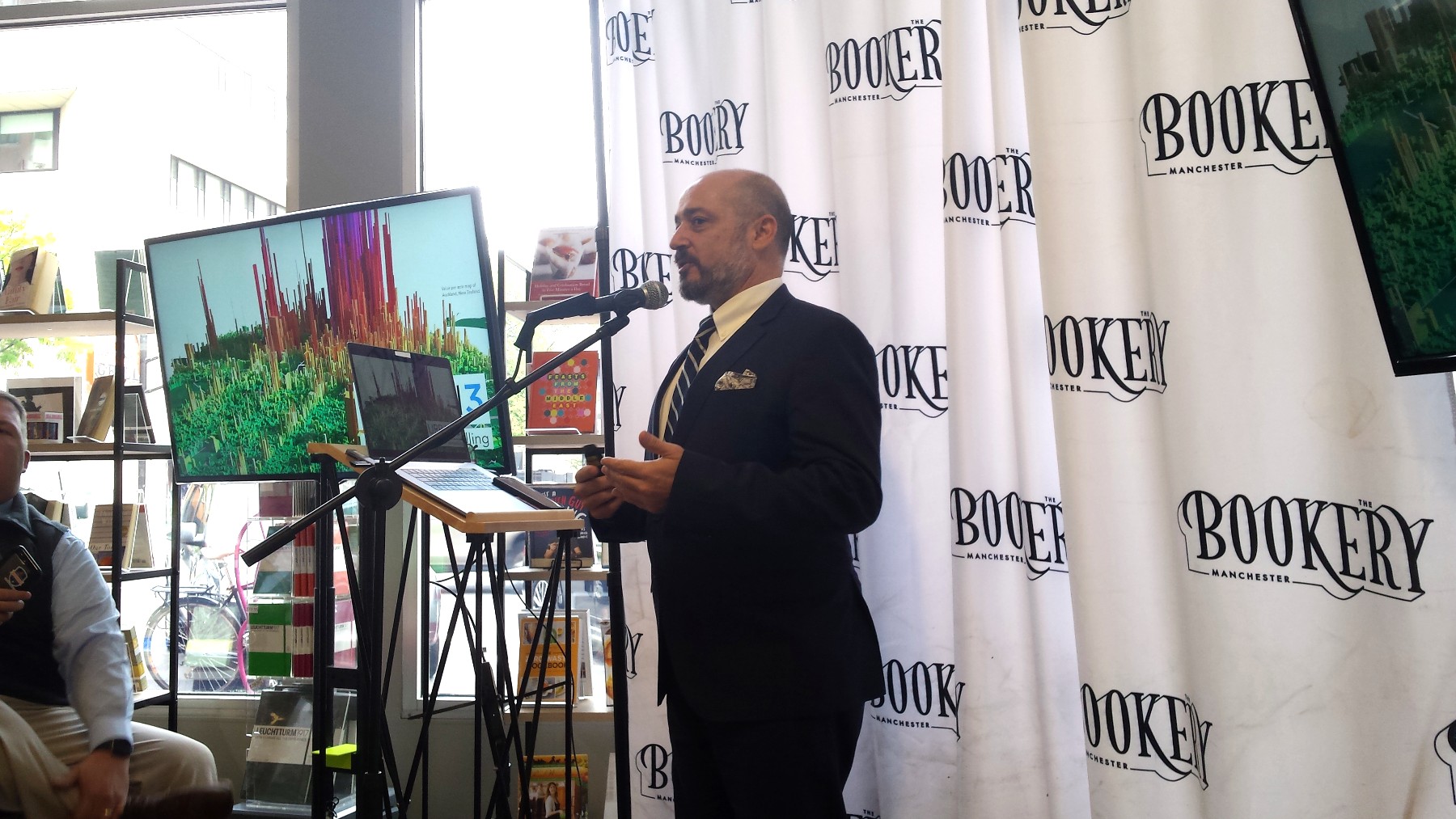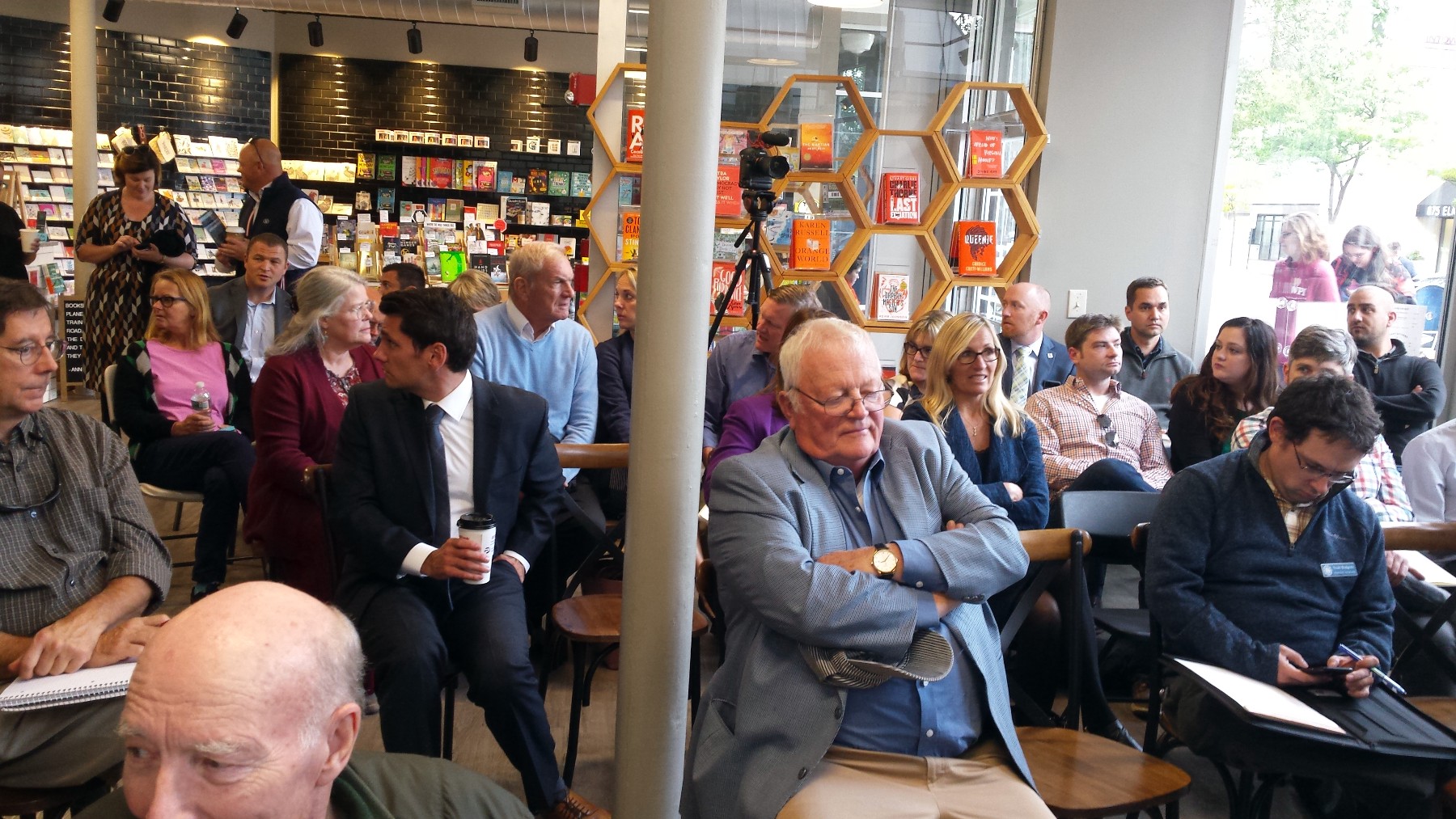
MANCHESTER, NH — Acre for acre dense urban neighborhoods are the cheapest to maintain and yield the highest return on investment when it comes to assessed value and property tax revenue.
That was the message delivered by urban planner Joe Minicozzi of Asheville, North Carolina’s Urban 3 at a series of presentations Oct. 16 at The Bookery in downtown Manchester.
Using a combination of property tax analysis and data visualization of development patterns, Minicozzi described how densely developed areas, with fewer streets and less parking, deliver greater contributions to the tax base and place less of a burden on the municipal budget. One example was a comparison between the assessed value per acre of the Mall of NH, which is valued at $2.8 million per acre of land and the 20-story City Hall Plaza building which is valued at $68 million per acre. Multi-story buildings have a higher assessed value. At the same time they have less adjacent street paving to maintain and less water, sewer, and utility infrastructure to maintain, meaning that costs are lower.
Manchester has 1,326 miles of roads and streets to maintain. Laid end to end they would reach to Orlando, Florida. The city also had a significant boom in the construction of low-density residential neighborhoods after World War II. The average lifetime of a road is 50 years. This means that there will periodically be a bump when a significant number of the streets will need reconstruction. Minicozzi said that the tax cap presents a significant barrier to addressing that need in a timely way.

Mincozzi believes that parking spaces are overrated. In terms of assessed value they provide low return on investment. He noted that nearly every downtown in America hollowed out their downtown areas to provide parking. This open, underutilized space represents lost opportunity and a loss of revenue. Parking requirements also lead to sprawl which requires more miles or road and other infrastructure that need to be maintained.
He also sang the praises of older buildings. Manchester’s downtown commercial buildings were built to make a statement that would persist beyond the lifetime of the builder and see multiple uses over their lifetime. He noted that by contrast, Walmart builds its stores to begin depreciating immediately and reach their end of life in about 15 years. A perfect example, he noted, is the Bedford Walmart that recently closed after 15 years.
Minicozzi was hired by Jeremy and Liz Hitchcock to assist them in their efforts to invest in projects that will have high impact in the community. Minicozzi previously worked with investor Julian Price, who transformed downtown Asheville by investing in rundown and abandoned commercial buildings. A key component of the revitalization was the redevelopment of mixed-use buildings that combined retail and commercial space on the lower floors with residential units on the upper floors.
Amy Chhom of Chhom Group is partnering with the Hitchcocks on the renovation of a former shoe factory on Willow Street into a mixed-use development that will include commercial, retail and residential units. Said Chhom: “We’ve had so many people in for this presentation over the last few days and it has been well received. We hope that it will help people develop a different vision of what downtown development can look like.”
Of particular interest is the issue of providing parking spaces. “The parking requirement is a limitation for us. If we could include more units, we could afford to charge lower rents,” Chhom noted.







